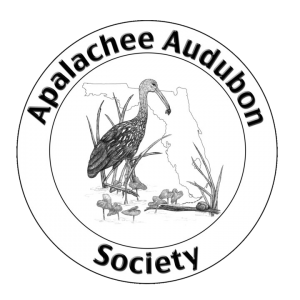by Peter Kleinhenz
An eastern phoebe provided the introductory music to the field trip last Sunday at Spring Canyon, located near Torreya State Park. Seventeen Audubon members joined landowners Helen and Tom Roth to your their 100 acres of Apalachicola uplands.
Restored longleaf pine/wiregrass uplands on Helen and Tom Roth's property.
Helen spearheaded restoration efforts on her land, seeking to return the ecosystems back to what they were before fire suppression, logging, and invasive species took their toll there (and almost everywhere else in Florida). Helen toured us around areas where she had been burning, planting longleaf pines, pulling invasive plants, and cutting trees that had invaded what once were open, park-like forests.
The group prepares to embark on an exploration of Spring Canyon
The birds were surprisingly inconspicuous, but we were still able to locate many interesting wildlife species. A grizzled mantis scuttled up the trunk of a longleaf pine. Ground skinks, green anoles, and eastern fence lizards gave us regular forest-floor entertainment. While exploring the edge of an impoundment, the largest cottonmouth I've ever seen (and I've seen plenty) slowly slithered away from us.
A blurry photo of the largest cottonmouth I've ever seen. It was approximately 3.5 feet long.
Steepheads on the property supported Appalachian plants such as mountain laurel and Matalea alabamensis, along with interesting species such as Apalachicola dusky salamanders (I observed five on Sunday). In addition, they offered relief which was apparent when we stopped at an eroded cliff face and when Helen kindly warned me to stay back from the edge of the cliff while we were hiking.
An imperiled plant, Matalea alabamensis, grows on the edge of a steephead.
Landowners like Tom and Helen, in many respects, represent the future of conservation. We can protect all the public land we want but, with a growing population, what people do in their own backyards will dictate the survival of many species. I found it inspiring to see people dedicate their lives to helping our world.




